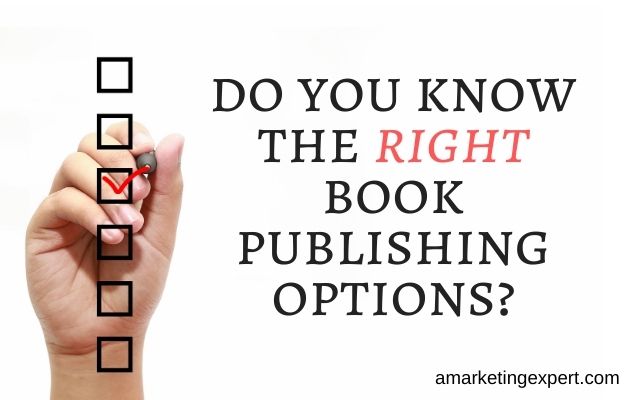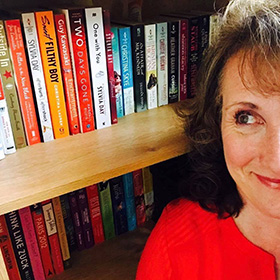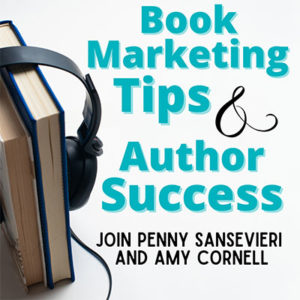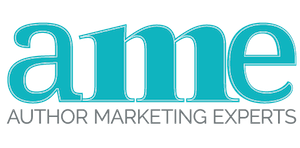As authors, we’re really fortunate when it comes to getting our books out there because we have more book publishing options than ever. That’s the good news. The bad news is, not all of those options are good.
A few years ago, I wrote a post on how the wrong book publishing options (or publisher) can kill your success, but it’s worth revisiting again. Because now, more than ever, there are so many ways for authors to get their books in print.
The issue is that once you’ve finished your book, you really just want to turn over the actual production of the book to someone else. I get it. I’ve published 18 books and I still know nothing about typesetting a book or the design elements that go into creating a stunning cover. I’d love to just hand that over to someone else.
But the truth is, your choices about *who* you publish with will impact your success – and not always for the best.
Types of Book Publishing Options and Publishers
There are a lot of different “types” of publishers out there, some big (think: Simon & Schuster) and some smaller, or “boutique” as they’re often referred to. Other publishers that are what’s called “hybrid” add another complexity to the mix.
So let’s explore some of these publishers and the options they might present to you and your book. We’ll start with the hybrid model because there’s a lot of confusion there. And with good reason. There’s no hard and fast outline about *what* exactly a hybrid publisher is.
Hybrid Publishers
In theory, the term “hybrid” means a combination of publishing elements. So you might still pay to publish, but in exchange, you get access to their distribution network. Be mindful of the fact that “distribution” is not putting the book up on sales portals – you can do that yourself. Ideally, your hybrid publisher should come to you with some kind of a deal. Yes, publishing with them might require an investment, but in return, you get lots of good benefits. For example:
- Access to great cover designers and book interior designers
- A solid distribution plan
- Library placement (some offer this too which is also great)
- A robust mailing list of book buyers
- Access to their catalog, if they produce one, which might be popular among book buyers
The issue here is that there is a fine line between hybrid publishing and “vanity” publishing, and you shouldn’t confuse the two. Vanity publishing is a model where the author spends lots of money to get their book in print, but there are NO other benefits. The publishing models are often very pricey – some start at $5000 and go up to $20,000.
When you’re done, you have a book and that’s it – and then they try to sell you on marketing services.
There’s another form of hybrid publisher, and those are the companies who show up disguised as “arms” of bigger publishing houses. Some of the big New York publishers have partnered with these firms to take on the books the larger publishing houses have rejected. Which, in theory, seems fine right? I mean they’re finding them a place to go, right?
The issue is that if you choose this book publishing option, do not assume that you’ll be considered by a big publishing house if your book does well. Sure you might, but publishing with these publishing “arms” often comes at a high price, and once you’ve paid that, they’ll try to sell you on marketing services, like the vanity presses mentioned above.
Self or Indie Publishers
Companies like BookBaby and Ingram Spark may have started as “printers”, but they’ve all morphed differently and they don’t pretend to be something they aren’t. They are facilitators really – they can facilitate getting your book into the various online shopping channels. They offer no real distribution beyond that, but you could also do that on your own.
Many offer book cover design services as well as interior design services. Some of these are very good, but you’ll only know that once you start investigating them and taking a look at their library of work.
Traditional Publishers, University Presses & Small Publishers
One reason why I put these three types of publishers in the same section is that while their focus is often different – they all (generally) offer the same type of deals to authors – some, but not all, need to be secured using a literary agent. Though some smaller publishers will gladly take well-organized author submissions.
Since our primary focus for this post is on indie book publishing options, I’ll leave a more in-depth explanation of these publishers for a later time.
If you are considering your indie/self book publishing options, let’s take a look at some things you want to take into account, before signing on with an indie press/publisher:
Prior Books
If you have a publisher who hasn’t published a single book yet, I’d proceed cautiously. Yes, I agree, everyone needs to start somewhere but remember: this book is likely one of the most important things you’ve done in a long while, you want someone who is experienced.
Their experience will also give you a glimpse into where you might land, in terms of what your book might look like, and how it’s handled.
Take some time to review other books on their website, and then head on over to their Amazon pages and see how the book is set up there. Meaning, how is the book description? Is it visually appealing and formatted nicely or jammed together in one paragraph? Is there an eBook? Audiobook?
Google some of the authors listed on the publisher’s website and ask them what their experience was with that publisher. Most, if not all authors are super forthcoming in their feedback – so don’t hesitate to reach out and ask what their experience was while you are researching your book publishing options.
Book Cover Design
Don’t assume that just because you’ve hired a publisher and paid them money (maybe a lot of money) that your book cover is going to be exactly right for your market. I see a lot of authors who come out of indie presses with book covers that really aren’t right for their genre.
How will you know? Well, you need to do the work. Research the top, best-selling books in your genre and you’ll get a sense of the “look” of the market. If your cover can’t compete with these covers, you should insist on a redo until it’s right.
And here’s another tip: be sure to check your publishing contract about cover revisions and how many you’re allowed. Sometimes publishers won’t allow more than one or two revisions. If it’s not explicitly written in the contract, be sure to send an email and ask – get it in writing.
Book Pricing
I can’t emphasize enough how important this is. I spoke with an author the other day who came from an indie publisher – they told her that her print book was worth $50 and she should price it as such.
Yes, I’m sure we all feel that our books are worth $50 or more! But will readers pay that? Unless it’s a large, well-designed coffee table book, the answer is: not likely.
Some years back, I had the head of an indie publishing house tell me that they bank on authors buying 100 copies of their own books. Often, this is where publishers make back the bulk of their money if they charge a low or no entry fee to publish – so the higher your book price, the more they make. But having a higher book price, unless it aligns with your market – makes zero sense for book marketing.
As you’re investigating publishers and checking out their books on Amazon, check out the book pricing too and make sure it aligns with industry-standard pricing.
Another element in your publishing contract might be pricing. Who gets to pick this pricing? And can you discount your eBook if you want to? Discounted eBook specials are fun ways to drive more attention to your book. If it’s not in the contract, get it in writing. If you can’t discount your eBook, or if they won’t let you – ask them why. If there’s no good answer for this, you’ll want to move on.
Access to Your Book
This is a pretty big deal, and one most authors don’t really understand until it’s too late.
When a publisher – whether it’s a hybrid or indie press, like Bookbaby, uploads your book to Amazon, it’s on their account. Meaning, it’s on their dashboard. You won’t have access to the book to change out keywords, change pricing, or run Amazon ads.
You can avoid this by publishing your own Kindle eBook on Amazon – which most publishers will allow you to do. If they don’t, find one who will.
Having access to this book format is really important if you want to do anything related to Amazon: book page and keyword optimization, adding a great keyword-centric subtitle, running Amazon ads, changing your book pricing, or polishing your book page.
Author Copies and Bulk Discount Pricing
Finally – how much will it cost you to buy your own books for promotional purposes? If that’s not in your author contract, be sure to get that in writing, too. And what about buying your book in bulk? Whether it’s for an upcoming speaking event or some other bulk sale purpose, you’ll want to be sure to get your discount pricing ahead of signing the contract. Here’s why: some unscrupulous publishing houses make you buy a certain number of your own books (for the reason stated above, to make back their investment) and sometimes that number is as high as 1,000 copies. Sorry, but that’s a lot of books to just have on hand.
Unless you decide to publish on your own, you’ll need to find a publishing partner that helps you, rather than hinders your success. Good luck!
Resources and Free Downloads
How to Market a Self Published Book without Wasting So Much Time
FREE Reader Profile Brainstorm
Book Marketing Kickstart Package
AME Book Marketing Podcast on Apple Podcasts
Jane Friedman: Reporting and Consulting on the Publishing Industry






0 Comments
Trackbacks/Pingbacks